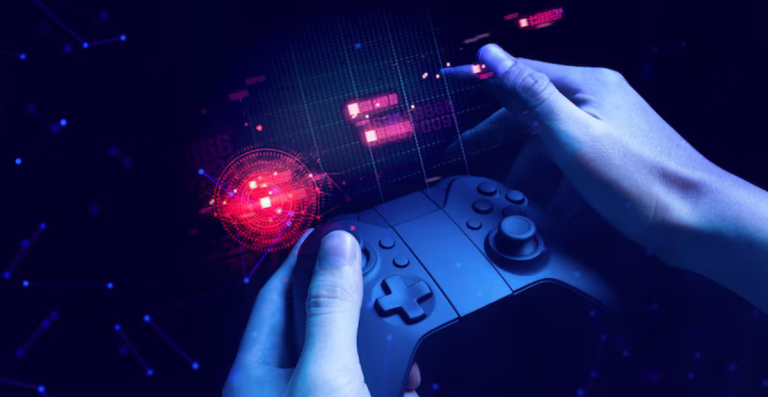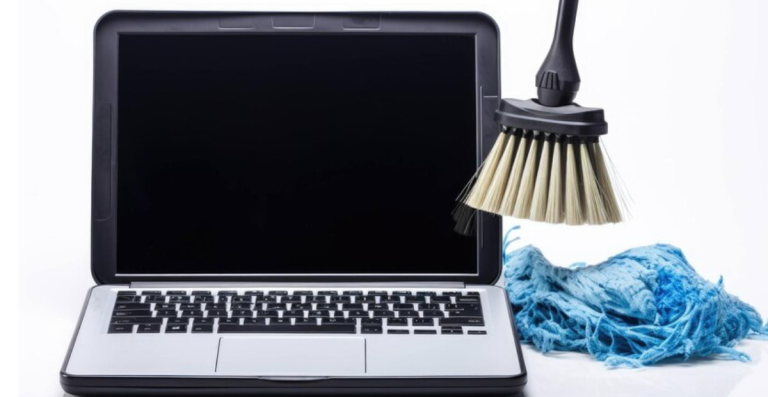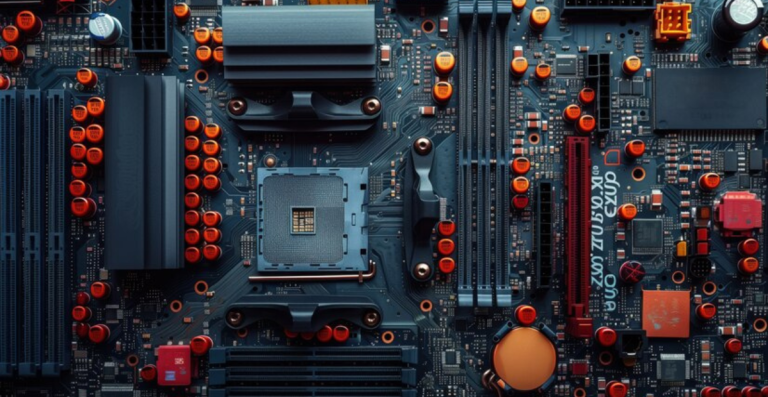Multi-Monitor Setup Bottlenecks

Advanced users, professionals, and gamers who wish to increase productivity and immersive experiences are increasingly choosing multi-monitor setups. But each screen comes with its own set of possible problems that could affect how well your system works.
When your system is unable to manage the increased demand on its components, such as the GPU, CPU, and memory, bottlenecks frequently arise. The typical Multi-Monitor Setup Bottlenecks that arise, particularly in professional and gaming settings, and offer practical advice to maximize performance, can be overcome.
Understanding Multi-Monitor Configurations
Although there are many benefits to setting up a multi-monitor system, it’s important to comprehend the various configurations and how they could affect your system. Below is a summary of the most popular multi-monitor configurations.
Dual Monitors
The most popular and straightforward technique to increase the size of your desktop is to use two monitors. You can multitask efficiently by connecting two monitors and using each to display separate material.
For people who need to handle multiple apps at once, including while working with documents, spreadsheets, or browsing while monitoring emails or other notifications, this configuration is perfect.
However, if the system isn’t strong enough to handle two displays at once, even with high-resolution monitors, dual-monitor configurations may result in performance problems.
Triple Monitors
By including a third screen, a triple-monitor arrangement builds upon a dual setup. Gamers, video producers, and designers who require a large amount of screen real estate frequently like this.
Professionals may handle numerous apps side by side without frequently switching between windows by using triple monitors, which can also give gamers a panoramic perspective.
It’s important to make sure your system has the necessary power to sustain fluid performance across all three screens because the additional monitor puts additional strain on the GPU.
Quad Monitor and More
Some people prefer a quad monitor arrangement or even more, though this is less popular. This is particularly helpful in specialist fields like sophisticated video editing, financial trading, and complex data set monitoring. Users can increase efficiency by displaying multiple sorts of information at once on four or more displays.
These setups, however, require a large amount of CPU and GPU power. System bottlenecks are more likely to occur when the number of monitors rises, particularly if the hardware isn’t strong enough to handle the added demand.
Benefits of Multi-Monitor Setups
Although multi-monitor configurations may present certain difficulties, they also provide a number of advantages that can greatly enhance workflow and productivity.
- Increased Efficiency: Users can work on numerous activities at once using many screens, which speeds up execution and reduces interruptions.
- Enhanced Workflow: By cutting down on the amount of time spent navigating between tabs or apps, multi-monitor configurations improve workflow.
- More Comfort and Fewer Mistakes: More screen real estate lessens eye strain and eliminates mistakes brought on by frequent window switching or resizing.
Impact of Multi-Monitor Configuration on GPU
The GPU is one of the first parts of your system to suffer noticeable strain when you connect multiple monitors. For all connected screens, the graphics processing unit is in charge of managing visual data and rendering images.
The GPU’s workload rises with each extra display, which could cause performance problems if the hardware isn’t capable of handling the demand.
- Increased GPU workload: When you attach several displays to a single system, the GPU has to manage additional pixels and graphical outputs. This increasing burden means more rendering operations, more memory utilization, and increased heat generation. Even if you’re not gaming, merely extending displays across several screens adds pressure on your graphics card, especially with high-resolution monitors or demanding background visuals.
- Issues with variable refresh rates: Running monitors with varying refresh rates can confuse the GPU. It must constantly sync output for each monitor, which can cause stuttering or screen tearing. For instance, connecting a 144Hz display with a 60Hz one often produces frame pacing issues. To ensure seamless performance, it’s desirable to keep refresh rates identical across all linked devices.
- Hardware acceleration and GPU overload: Hardware acceleration allows apps like browsers and video editors to exploit the GPU for smoother performance. But with many apps using hardware acceleration across many monitors, the GPU can become overwhelmed. This may result in lag or graphical issues. Disabling hardware acceleration in non-critical programs is a simple approach to lessen stress on the GPU.
- GPU Requirements for Multi-Monitor Gaming: Gaming on several displays, such as in an ultra-wide or surround setup, substantially increases the GPU’s burden. The card needs to render a broader field of vision and more detail concurrently. High-end GPUs with substantial VRAM and good multi-display compatibility are necessary for pleasant gaming experiences across two or more screens.
- Increased Rendering Demands: Multi-monitor setups increase rendering demands since the GPU must handle several frame buffers. Even basic animations, mouse movement, or playing media across displays boost GPU consumption. When higher resolutions like 1440p or 4K are involved, the demand climbs further. This can dramatically degrade frame rates, especially while multitasking or performing high-performance jobs.
Impact of Multi-monitor Configuration on Memory
Your system memory (RAM) manages everything you see and do across numerous monitors in the background, so it doesn’t just sit there doing nothing. The intricacy of the jobs your system can do rises with each additional monitor, and RAM is essential for seamless multitasking.
- Desktop environment overload: Each additional monitor increases the amount of desktop space that needs to be controlled. Windows, icons, and background tasks on many screens require extra memory to render properly. This can overburden your system’s RAM, especially when running many resource-intensive applications across displays. The outcome is sluggish performance or system slowdowns.
- Application management over many monitors: Managing apps over numerous displays adds complexity to memory management. Each application and its related data must be processed independently for each screen, which increases the system’s memory utilization. If you’re running many applications on each display, the operating system’s memory usage climbs substantially, and this might lead to slowdowns, especially when the machine doesn’t have enough RAM.
- Overall RAM Consumption: With a multi-monitor arrangement, the system needs additional RAM to handle numerous tasks at once. More space is necessary for storing window locations, app states, and active operations across all displays. Over time, this leads in increasing RAM consumption, leading to performance degradation, especially if the system’s total memory is insufficient to match the expanding needs.
Impact of Multi-monitor Configuration on the CPU
In multi-monitor configurations, the CPU is still crucial even though the GPU and RAM manage the majority of the visual and background work. When more windows and apps are open across screens, it has a harder job, which could cause performance lag, especially on mid-range computers.
- Window management tasks: With each additional monitor, the CPU must handle the management of more windows, icons, and background tasks. This results in an increased demand for CPU resources. While the task may seem straightforward, controlling many applications and ensuring they function smoothly across different displays can overburden the CPU, especially with low processing capacity.
- Heavy burden with numerous programs: When you run several applications simultaneously on multiple monitors, the CPU is responsible for keeping track of their states and ensuring smooth transitions. This excessive workload might be stressful for the CPU. Running resource-intensive apps like video editors or games on several displays might further exacerbate the situation, leading to performance slowdowns if the CPU isn’t adequately powerful.
Multi-monitor Gaming Setups and Bottlenecks
Gaming on multiple monitors poses unique performance concerns, with the biggest issues being related to frame rates and refresh rates.
Frame Rate Drops and Stuttering
When employing multiple displays for gaming, the GPU is charged with producing more frames per second (FPS) across several screens. If the GPU cannot keep up, you may encounter frame rate drops or stuttering, hurting the game experience.
Refresh Rate Mismatch and Its Impact
Differing monitors may have differing refresh rates, which might create mismatched visual output across the screens. This mismatch can lead to ripping and a less-than-ideal gaming experience. Synchronizing refresh rates across all displays is critical for seamless operation.
Multi-monitor Configuration and Productivity Software Challenges
Multi-monitor configurations can also create issues for certain productivity software, particularly when it comes to video playback and browser performance.
Video Playback Issues
Some video playback software may fail to manage high-definition video across many displays. This can lead to buffering, lower-quality playback, or even crashes.
Hardware Acceleration in Browsers
Web browsers with hardware acceleration can place an additional burden on the GPU, especially when running on several monitors. This could cause the browser to be sluggish or even freeze during intense tasks like streaming or video editing.
Identifying Multi-monitor Bottlenecks
To successfully fix performance concerns, it’s necessary to pinpoint where the bottleneck is occurring. Here’s how you can discover potential issues:
- Using Task Manager for Performance Monitoring: Use Windows Task Manager to monitor the performance of your GPU, CPU, and RAM. This tool can help you detect if any component is being overworked.
- Testing with Gaming and Productivity Applications: Running demanding programs might help you detect performance issues. Whether gaming or working with heavy software, monitoring performance under pressure will assist in identifying specific bottlenecks.
How to Avoid Performance Problems by Multi-monitor Configuration
Here are some strategies to avoid common performance difficulties connected with multi-monitor setups:
Hardware Solutions
Upgrade the GPU: A more powerful GPU can handle the demands of multi-monitor setups, especially for gaming or graphics-intensive applications. This upgrade will ensure smoother performance.
Increase System Memory: Upgrading your RAM allows your system to handle additional programs without slowing down. This is particularly crucial for multi-monitor systems where numerous apps are running simultaneously.
Adjust Monitor Specifications
Consider Using Monitors with Similar Specifications: Using monitors with identical resolutions and refresh rates helps ensure consistent visual output across all screens, eliminating possible difficulties like screen tearing.
Ensure Proper Cable Connections and Support: High-quality cables that enable higher resolutions and refresh rates are necessary. Ensure that your cords are compatible with your monitors to avoid visual abnormalities.
Software Optimization
Disable Hardware Acceleration: Disabling hardware acceleration in browsers and media applications helps minimize the GPU strain, boosting system performance.
Update Drivers: Ensure your graphics drivers are up to date. New driver updates typically offer speed improvements and bug fixes, which can help optimize your multi-monitor experience.
Use Full-screen Mode (for Games): Running games in full-screen mode guarantees the GPU dedicates its resources to rendering the game on the primary monitor, enhancing performance.
Configuration Settings
- Adjust Screen Scaling: Screen scaling settings can help improve visual performance, particularly when utilizing monitors with differing resolutions.
- Limit Background Processes: Close unneeded apps running in the background to free up system resources. This helps ensure that your CPU and RAM focus on the tasks that matter.
- Optimize Windows Settings: Tweak Windows settings to optimize performance. You can disable animations, modify power settings, and ensure that your operating system is equipped to handle multiple monitors properly.
- Match Monitor Settings in OS: Make sure that your OS identifies each monitor correctly and adjusts settings like resolution and orientation accordingly. Mismatched settings can cause performance concerns.
- Verify Monitor Input Sources: Check that your monitors are linked to the correct input sources. Incorrect connections might lead to visual defects or instability in performance.
Final Thoughts
A multi-monitor arrangement enhances productivity and workflow, but it can also cause performance bottlenecks, notably with the GPU, memory, CPU, and software. As more monitors are installed, the demand on your GPU rises, potentially producing difficulties like frame rate reductions and refresh rate mismatches. Additionally, memory and CPU resources can become overloaded, decreasing multitasking efficiency.
To avoid these difficulties, check performance using tools like Task Manager, upgrade hardware such as the GPU and RAM, and optimize software settings. Adjusting monitor settings, updating drivers, and deactivating hardware acceleration can help improve performance. With the correct changes, a multi-monitor system may be seamless, delivering considerable benefits for gaming, work, and more.





